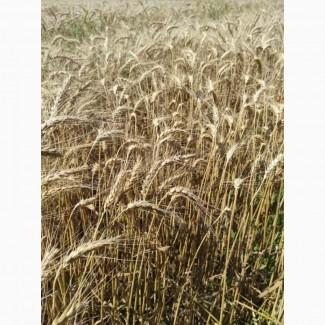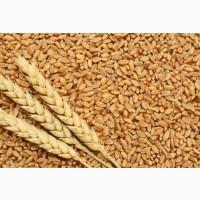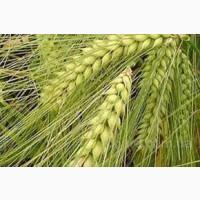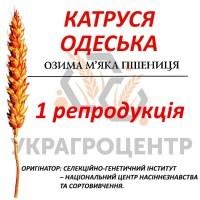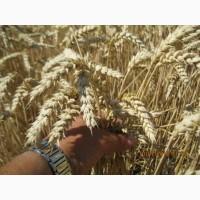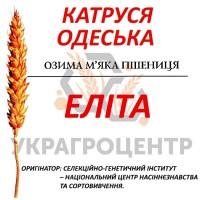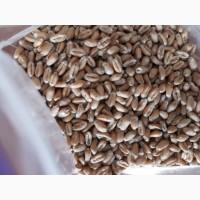Sell / buy
Winter wheat Katrusya Odessa leader in drought, Dnipropetrovsk region.
Price11,500 UAH. / ton
Region:all of Ukraine,
Dnipropetrovsk region.
(Synelnikovo)
Updated:
Purpose of grain: Seed material
Quantity: 100 tons
Seeds winter soft wheat "Katrusia Odesa"
Originator: Breeding and genetic institute - National center of seed science and variety study.
Economic and biological characteristics:
- High intensity type, universal use on high and medium agro backgrounds.
- Yield during the years of state variety testing in the steppe zone was on average at the level of 7.9-11.4 t/ha, exceeding national standards by 0.76-1.23 t/ha (10.2-19.4%). The variety is distinguished by a large (11.4-12.7 cm), well-seeded ear (62-72 grains) and medium bushiness (612-786 stems per 1 m2).
- Short-stemmed type, plant height 84-95 cm, resistant to lodging (9 points), shedding - 9 points.(//tractor-service.com)
- Medium ripe. Vegetation period 280-285 days.
- Frost and winter resistance above the average level, drought and heat resistance are high. Increased resistance to soil acidity and salinity.
- Resistance to phytodiseases (points): brown rust 6-7, stem rust 5-6, powdery mildew 7-8, fusarium head blight 5-6, root rot 7-8.
- Qualitygrains: protein content 13.8-14.5%, gluten content 33-38%,flour strength 320-340 о.а., загальна оцінка хліба 4,4-4,8 бали. В агротехнічних дослідах виявлена підвищена стабільність показників хлібопекарських властивостей на середніх і низьких агрофонах.
Approbative signs: a variety of erythrospermum, a semi-spreading bush, stems and leaves, starting from the phase of emergence into the tube and until the emergence, are covered with a waxy layer with increasing intensity. When fully ripe, the spikelet is white, spindle-shaped, of medium density (19-21 spikelets per 10 cm of stem, 11.2-12.5 mm long). The straw is thick, elastic, the subspike internode is elongated. Spike scale oval-lanceolate, slightly pubescent, length 14.5-15.2 mm, width 3.9-4.2 mm. Shoulder straight, width 0.64-0.82 mm. Spikelet spike is straight, short (3.2-3.7 mm). The keel is present, the tongue is short. The grain is red, elongated (length 7.8-8.7 mm, width 3.5-3.8 mm, thickness 3.4-3.8 mm).
Agrotechnical requirements: the variety shows high productivity potential with intensive cultivation technology, but is distinguished by the stability of yield and grain quality in varying growing conditions. The variety withstands deviations from optimal sowing dates, exhibits a relatively high lower yield threshold on soils poorly supplied with nutrients after its predecessors, effectively uses both high and low doses of nitrogen mineral nutrition.
Originator: Breeding and genetic institute - National center of seed science and variety study.
Economic and biological characteristics:
- High intensity type, universal use on high and medium agro backgrounds.
- Yield during the years of state variety testing in the steppe zone was on average at the level of 7.9-11.4 t/ha, exceeding national standards by 0.76-1.23 t/ha (10.2-19.4%). The variety is distinguished by a large (11.4-12.7 cm), well-seeded ear (62-72 grains) and medium bushiness (612-786 stems per 1 m2).
- Short-stemmed type, plant height 84-95 cm, resistant to lodging (9 points), shedding - 9 points.(//tractor-service.com)
- Medium ripe. Vegetation period 280-285 days.
- Frost and winter resistance above the average level, drought and heat resistance are high. Increased resistance to soil acidity and salinity.
- Resistance to phytodiseases (points): brown rust 6-7, stem rust 5-6, powdery mildew 7-8, fusarium head blight 5-6, root rot 7-8.
- Qualitygrains: protein content 13.8-14.5%, gluten content 33-38%,flour strength 320-340 о.а., загальна оцінка хліба 4,4-4,8 бали. В агротехнічних дослідах виявлена підвищена стабільність показників хлібопекарських властивостей на середніх і низьких агрофонах.
Approbative signs: a variety of erythrospermum, a semi-spreading bush, stems and leaves, starting from the phase of emergence into the tube and until the emergence, are covered with a waxy layer with increasing intensity. When fully ripe, the spikelet is white, spindle-shaped, of medium density (19-21 spikelets per 10 cm of stem, 11.2-12.5 mm long). The straw is thick, elastic, the subspike internode is elongated. Spike scale oval-lanceolate, slightly pubescent, length 14.5-15.2 mm, width 3.9-4.2 mm. Shoulder straight, width 0.64-0.82 mm. Spikelet spike is straight, short (3.2-3.7 mm). The keel is present, the tongue is short. The grain is red, elongated (length 7.8-8.7 mm, width 3.5-3.8 mm, thickness 3.4-3.8 mm).
Agrotechnical requirements: the variety shows high productivity potential with intensive cultivation technology, but is distinguished by the stability of yield and grain quality in varying growing conditions. The variety withstands deviations from optimal sowing dates, exhibits a relatively high lower yield threshold on soils poorly supplied with nutrients after its predecessors, effectively uses both high and low doses of nitrogen mineral nutrition.
|
Автор, контакти | |
OOO TD "Svarog Agro" / reviews, info. / оцінка активності | |
|
Phone:
+38(xxxxxx
show
| |
ID оголошення: #1134380
(added by a registered user, registration date: 2016-01-22)
Added / Updated: 09-26-2024 15:09 (current, until: 09-26-2025)
Permanent Ad Address:
Shows / views for today: ?, total: ?
